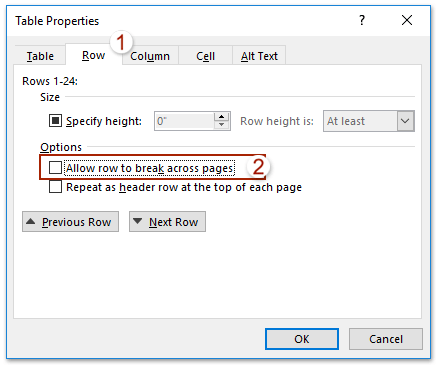
- #How to format page numbers in word for broken pages how to
- #How to format page numbers in word for broken pages code
Click heading “1” and subsequently from the drop-down list Link level to style , select Heading 1 style. Assume that these are the heading levels in your document. In the dialog box, you can see the heading levels as 1, 2, 3,….9 on extreme left under the label “Click level to modify”. We will restore the links using the Define New Multilevel List dialog box.Ĥ. At this point, understand that the main reasons for the numbered headings going out of order are due to the missing links between heading levels that you have applied and the corresponding default heading styles of Word. The dialog box expands with additional fields. From the dialog box, click button More (available on the left bottom corner). Define New Multilevel List dialog box appears.ģ. From the drop-down list, click option Define New Multilevel List. Select the first heading level and then from the Word Main menu, under the tab Home, within the group Paragraph, click the Multilevel List icon. In your current document, where the list numbering has gone wrong:ġ.
#How to format page numbers in word for broken pages how to
I am assuming, you already know how to create Multilevel list in Word (if not, learn here: ). In this article, we’re discussing a few tricks to quickly fix and streamline messy multilevel numbered heading as quickly as possible. Documents with hundreds of pages and multiple heading levels are particularly difficult to manage in Word.
#How to format page numbers in word for broken pages code
When you’ve finished, you can proceed to “suppress” the page number on the first page of your pleading – by deleting the page number code – and use a separate footer that displays the page number in the remainder of the document.Īdapted from my book, Formatting Legal Documents With Microsoft Word 2016 (click the link to go to the book’s page on Amazon).For many, creating and fixing multilevel lists in MS Word is a nightmare.

If so, go into the header at the top of any page that doesn’t have pleading paper and paste the paragraph mark. Scroll through the rest of the pleading to see if the pleading paper disappeared anywhere else when you applied the “Different First Page” option.If there is another paragraph mark in the header, delete it. Pasting the paragraph mark should restore the pleading paper, at least on that page. Be sure to use a standard paste – using Ctrl V or “Keep Source Formatting” – rather than “Paste and Keep Text Only.” Although I generally advise people to use “Paste and Keep Text Only” in order to avoid bringing unwanted formatting into your document, in this situation you want to retain the formatting of the pleading paper (the vertical lines and line numbers). Instead, simply paste the paragraph mark back into the header. Don’t panic if the pleading paper disappears.Next, click to check (enable) the “ Different First Page” option.If you have difficulty grabbing the paragraph mark with your mouse, press Ctrl A to select the entire header, then press Ctrl C to copy. That paragraph mark contains the formatting codes for the header, including the graphics (pleading lines and numbering). Select and copy the first paragraph mark (pilcrow) in the header.Display the non-printing characters ( Show / Hide) by clicking the Paragraph icon in the Paragraph group on the Home tab or by pressing Ctrl Shift *.Go into the header editing screen on the first page of your document by either double-clicking in the white space near the top of the page or right-clicking, then choosing “Edit Header.”.

If that happens to you, immediately click “ Undo” (or press Ctrl Z, the keyboard shortcut for Undo) and then do as follows: That is because the coding for the pleading paper is contained in the paragraph mark within the header, which gets wiped out (replaced with a different paragraph mark that doesn’t contain such coding) when “Different First Page” is enabled.

However, choosing the “Different First Page” option can cause the pleading lines and numbers to disappear. That option makes it easy to create a footer (or header) on the first page that is substantively different from the footer (or header) in the rest of the document – in this case, one that lacks a page number code. In order to “suppress” the page number on the caption page of a pleading, people commonly open the footer editing screen and apply the “Different First Page” option from the Header & Footer Tools tab. Restoring the pleading paper if it disappears when you use “Different First Page” (Word)


 0 kommentar(er)
0 kommentar(er)
